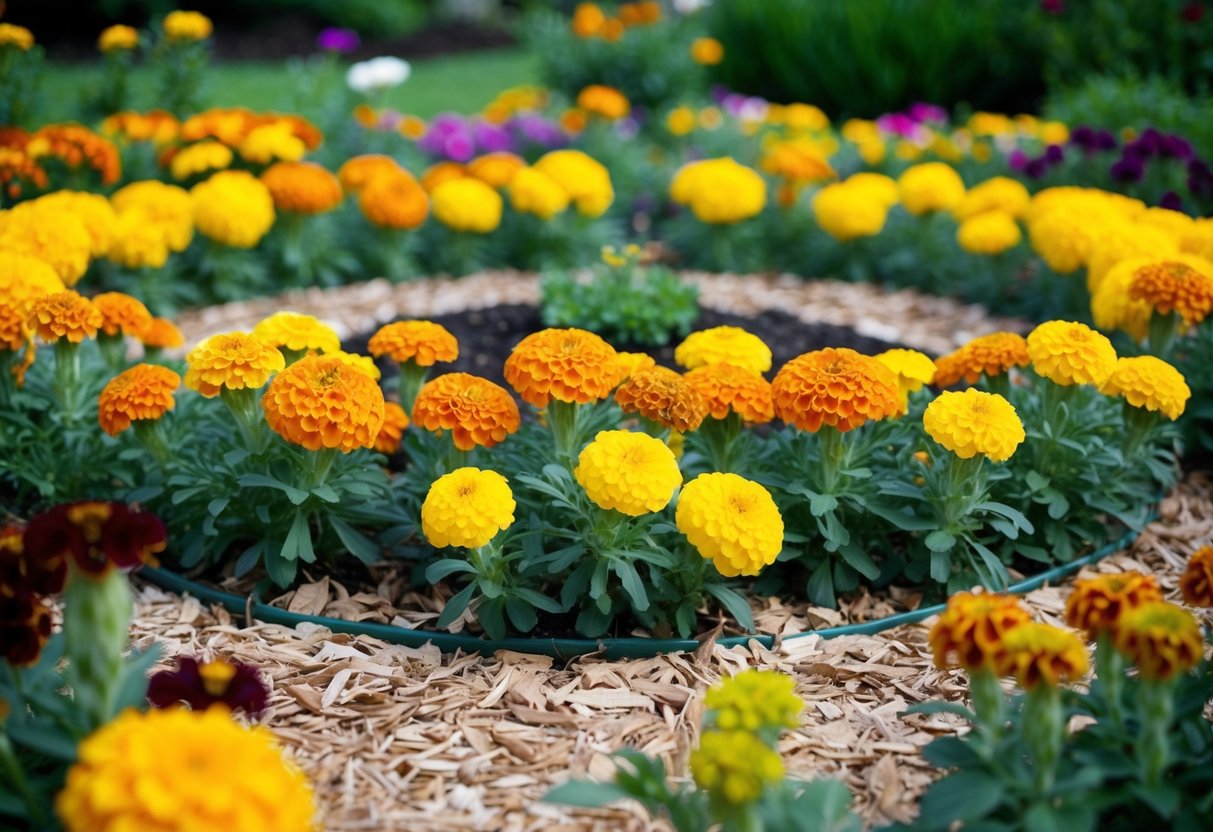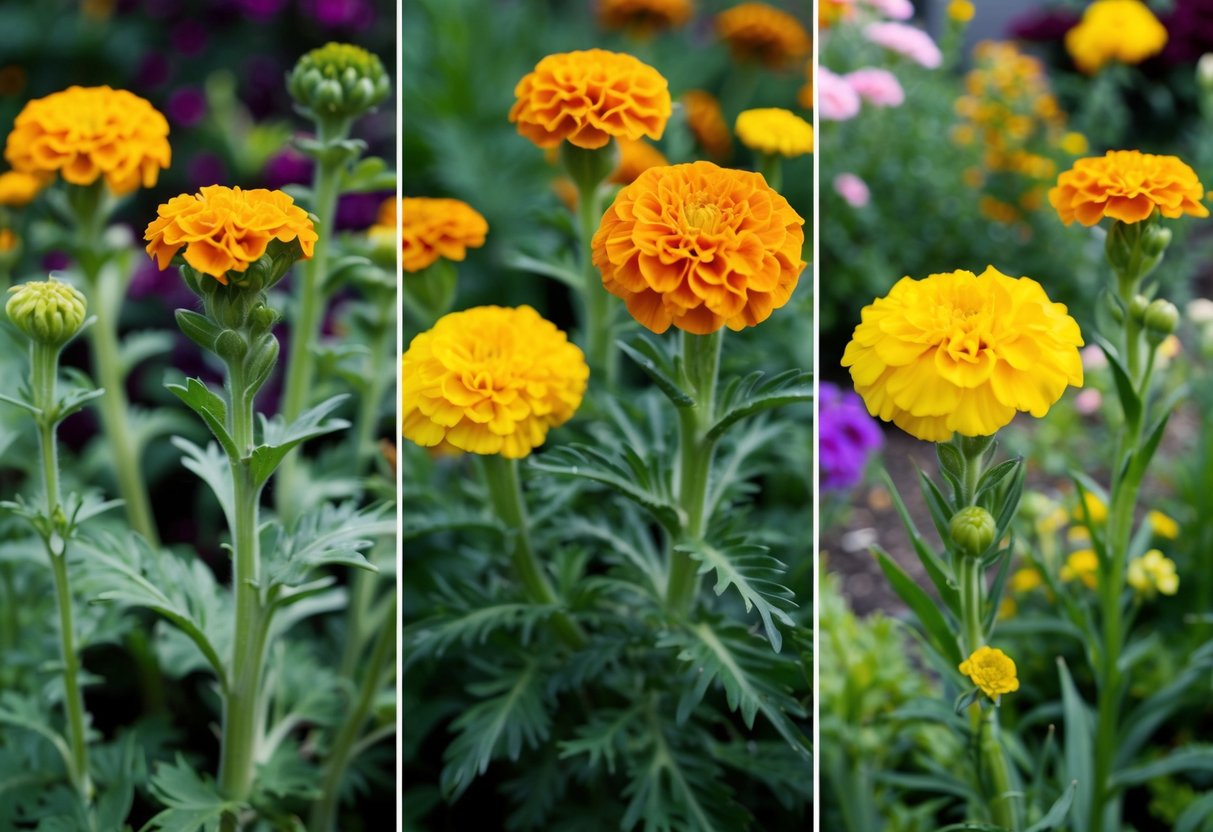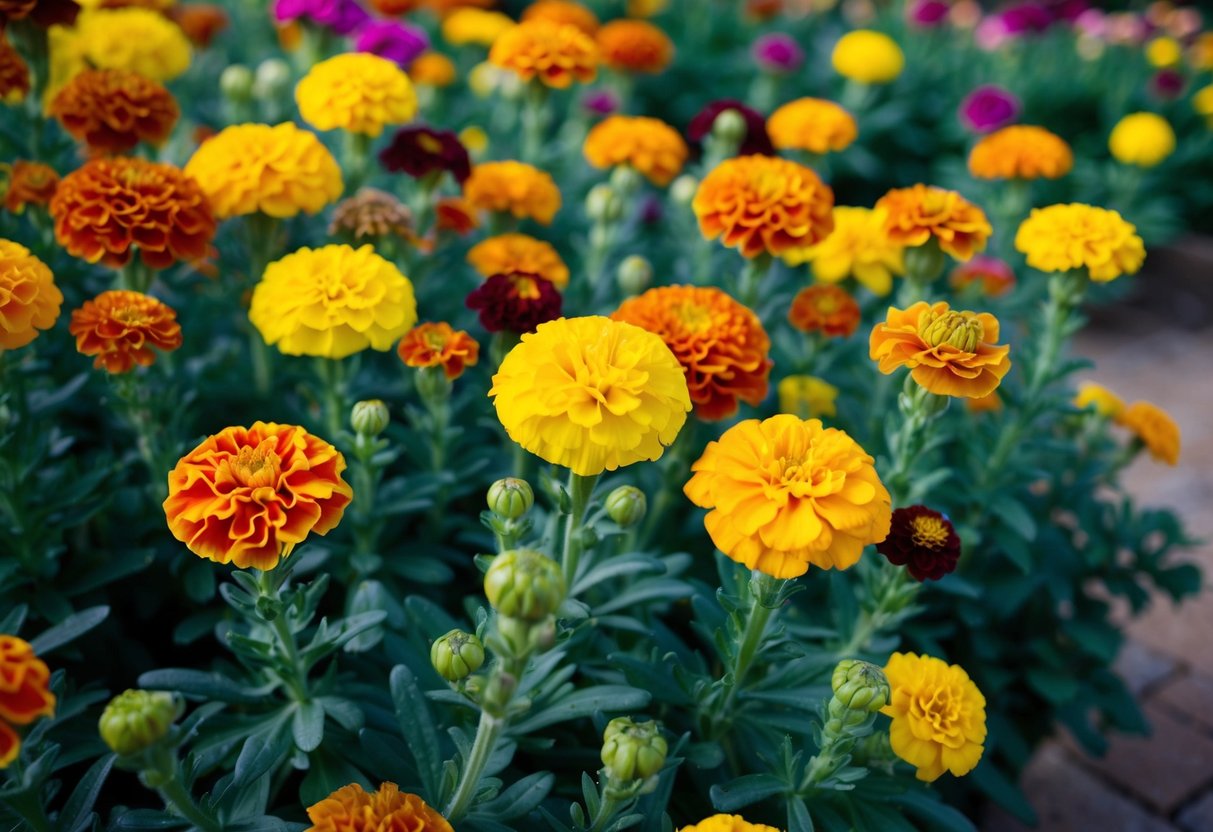How Many Marigolds Should I Plant Around My Garden? Tips for a Beautiful Bloom
When you’re thinking about how many marigolds to plant around your garden, consider the size of the space and how dense you want your display to be. A good rule of thumb is to plant marigolds about 8 to 10 inches apart. This allows enough room for them to grow to their full size and ensures a vibrant garden filled with color. This spacing is ideal for both French and signet types of marigolds.

Marigolds are more than just pretty flowers. They can attract pollinators like bees, which are great for your vegetables. Plus, they help repel certain pests, making them a smart companion plant for gardens. According to gardening resources, you can plant them around vegetables such as tomatoes to provide some natural protection.
The vibrant colors of marigolds, ranging from yellow to deep orange, brighten up any garden space. They look fantastic planted in rows along garden borders or in clusters. Whether you’re lining a path or filling a flower bed with marigolds, you’ll enjoy their cheerful presence in your garden.
Planning Your Garden

When planning your garden with marigolds, consider choosing the right varieties, understanding soil conditions, and determining how many plants you need. This will ensure a colorful and effective setup.
Choosing the Right Marigold Varieties
Marigolds are great for a vegetable garden because they attract pollinators. Different types bring different benefits.
French Marigolds (Tagetes Patula) are smaller and ideal for borders. They have a strong scent that helps keep pests away.
African Marigolds (Tagetes Erecta), known for their large blooms, are perfect for filling larger spaces.
Signet Marigolds (Tagetes Tenuifolia) thrive in poor soil and are easy to grow.
Mexican Marigolds are unique for adding different colors to your garden beds. By mixing these types, you create variety and health in your garden.
Understanding Soil Conditions
Marigolds are adaptable but prefer certain soils. Well-draining soil is key to their health. Make sure your soil has a neutral pH level. This usually falls between 6.0 to 7.0.
If your garden beds have clay or compacted soil, consider adding compost or sand. This improves drainage and adds nutrients. Test your soil, and adjust it as needed. Healthy soil helps marigolds grow strong and vibrant. Marigolds in polycultures with other plants can even improve overall garden health by enhancing soil quality.
Determining the Number of Plants
How many marigolds to plant depends on your garden size and goals.
For small garden beds, French or Signet Marigolds require less space, maybe every 9 inches. This makes them suitable for tighter areas.
African Marigolds need more room, often spaced 12-18 inches apart. Consider how densely you want to border your garden or fill a specific area. Always make sure each marigold is spaced correctly, so they thrive without competing for resources. Use this method to create a balanced and beautiful garden display.
Planting and Growing Marigolds

Planting marigolds requires careful attention to sowing seeds, nurturing seedlings, and transplanting them into your garden. With the right soil conditions and spacing, you’ll have vibrant marigolds enhancing your garden in no time. Below are key steps to ensure successful growth.
Sowing Marigold Seeds
When sowing marigold seeds, start after the threat of frost has passed. Plant seeds about an inch deep and one inch apart. The soil should be neutral with a pH between 6.0 and 7.0, which is optimal for growing marigolds.
Keep the soil moist without waterlogging it by watering them once a week. This encourages proper germination. If you grow seeds in a greenhouse, monitor temperature and humidity to mimic natural conditions. You may also choose intercropping with vegetables, as marigolds can help deter pests.
Caring for Marigold Seedlings
As your marigold seedlings grow, thin them out to prevent overcrowding. Space French and signet types 8 to 10 inches apart, while larger African marigolds should be 10 to 12 inches apart. This ensures each plant has ample room to thrive.
Consistent watering is crucial but avoid overwatering. Gradually reduce the amount after two weeks when the roots are stronger. Marigolds don’t demand rich soil, so fertilizing isn’t always necessary. However, a balanced, all-purpose fertilizer can be used in moderation to support growth.
Transplanting Marigolds to the Garden
When marigolds mature enough to transplant, choose a sunny spot in your garden. Ensure the soil is a good garden variety and not overly acidic. To make planting easier, water each plant after transplanting. This helps establish roots and prevents shock.
If you’re placing marigolds in containers, ensure they have a soil-based potting mix. Keep spacing consistent to avoid overcrowding. Regular monitoring and care ensure your marigolds flourish, adding vibrant colors to your garden’s landscape.
The Benefits of Marigolds in the Garden

Marigolds are an incredible addition to any garden. They work well as a companion plant, help with pest control, and attract beneficial insects. They also make great trap crops to protect your main plants from harm.
Companion Planting and Pest Control
Marigolds serve as excellent companion plants in vegetable gardens. Their strong scent can deter pests like tomato hornworms, cabbage moths, and Mexican bean beetles. By planting marigolds near these crops, you create a natural form of pest control.
Many gardeners believe that marigolds help with nematode problems in the soil. This means fewer issues with root damage in vegetables. When considering organic pest control methods, using marigolds is practical and eco-friendly. They provide a beautiful way to safeguard your plants.
Attracting Pollinators and Beneficial Insects
Marigolds are great at attracting pollinators and beneficial insects. Their bright colors bring in bees and other pollinators, boosting the yield of your vegetable gardens. By having more pollinators around, your plants will thrive and produce more fruits and vegetables.
Beneficial insects like ladybugs and lacewings are also drawn to marigolds. These insects help control pests naturally by eating them, making your garden healthier. It’s beneficial for both your vegetables and flowers, supporting a balanced ecosystem.
Marigolds as Trap Crops
Using marigolds as trap crops is a smart tactic in gardening. A trap crop is planted to lure pests away from the main plants you want to protect. Marigolds can attract pests that might otherwise damage your vegetables, serving as a decoy.
In particular, marigolds attract certain pests that bother tomatoes and beans. By planting marigolds strategically, you can prevent these pests from reaching their ideal targets. This approach helps maintain a garden’s health without relying on chemical interventions.
Ongoing Care for Marigolds

Caring for marigolds involves some simple steps. Key aspects include proper watering to prevent disease and deadheading spent blooms for more vigorous flowering.
Watering and Weeding
Marigolds are drought-tolerant, but they benefit from regular watering. Aim to keep the soil moist, especially during dry spells. Be cautious not to overwater, as this can lead to root rot. To protect your plants from pests like slugs, try watering in the morning to allow the foliage to dry by evening.
Weeding is essential to reduce competition for nutrients. Marigolds thrive when free from surrounding weeds. Regularly check for new weeds and remove them gently, making sure not to disturb the plant roots.
Deadheading and Pruning
Deadheading marigolds involves removing spent blooms. This will encourage your plants to bloom more vigorously as energy is channeled to new growth rather than seed production. Use sharp scissors or pruning shears and cut the faded flowers just above the next set of leaves.
This annual flower might occasionally need light pruning. Trim back any leggy or damaged stems to maintain a bushy shape. Regular inspection can also help with pest management, ensuring the plants remain healthy. Keep an eye out for signs of pests and address any issues promptly to maintain a vibrant garden.
Utilizing Marigolds Beyond Aesthetics

Marigolds offer more than just bright colors in your garden. These flowers can be used in the kitchen and for their medicinal benefits, making them a valuable addition to your planting plans.
Marigolds in the Kitchen
Marigolds, including the variety called Pot Marigolds or Calendula, can add color and flavor to dishes. Their petals are edible and can be used as a garnish in salads. They add a splash of orange or yellow, making any plate look more appealing.
You can also use marigold petals in soups or stews for a unique flavor twist. They have a slightly peppery taste, similar to saffron, which can enhance various recipes. You might find them in herbal teas as well, where they offer their subtle flavor and bright color.
These flowers can also help in creating a colorful border in your kitchen garden, providing beauty and utility in one.
Cultivating Calendula
Calendula, a type of marigold, has rich medicinal properties. It’s often used in creams and oils for its healing effects.
Applying calendula products to the skin can soothe irritation and aid in healing minor cuts or burns.
In addition to its medicinal uses, calendula is an easy plant to grow. It’s hardy and requires little maintenance, making it perfect for any garden.
They’ll thrive in a variety of soil types and conditions, adding both health benefits and visual beauty. You can enjoy the practicality and simplicity of cultivating these useful flowers in your garden.







